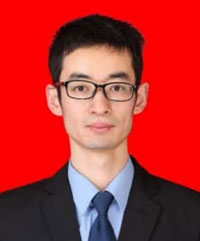Invited Talk: Tong Cai, Air Force Engineering University
Special session 11: Metamaterials, Metasurfaces, and Their Electromagnetic Applications

Short Bio:
Tong Cai received the B.S. and Ph.D. degrees in electrical engineering from the Air Force Engineering University, Xi’an, China, in 2012, and 2017, respectively. He was with Air Force Engineering University, where he became a Lecturer in 2017 and an associate professor in 2020. He has been a Post-Doctoral Researcher with Zhejiang University since 2019. His research interests include metamaterials, metasurfaces and their applications to novel antennas and multifunctional devices. He obtained the support of Postdoctoral Innovation Talents Support Program of China in 2019. He has authored over 40 peer-reviewed first author articles in Advanced Photonics, Advanced Optical Materials, IEEE Transactions on Antennas and Propagations, Physical Review Applied, and so on.
Title: High-efficiency Receiver-Transmitter Metasurfaces with Independent Control of Polarization, Amplitude and Phase
Abstract:
Polarization, amplitude and phase are three critical characteristics of electromagnetic waves as known. In this article, a general method with high efficiency and low complexity is proposed to realize simultaneously independent control of polarization, amplitude and phase of electromagnetic waves by receiver-transmitter integrated meta-atoms in transmissive geometry. The amplitude modulation is controlled by the rotation angle of top receiver patch, while the phase delay is determined by the rotation angle of bottom transmitter patch without affecting the amplitude. In addition, the polarization is controlled by the polarization of both receiver and transmitter. As a proof of concept, a metasurface with multiple diffraction orders is designed, fabricated and measured in microwave reigonnnogier. The measured results are in excellent agreement with the simulated ones. Our finding offers an alternative way to synthesize arbitrary wavefront shapes of EM waves, and we are looking forward to more high- performance photonic metadevices by applying this approach. |

